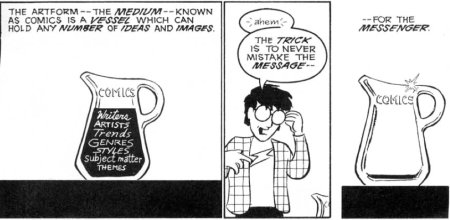I read it right after I read Blankets, and I think that has a lot to do with that. In comparison to Craig Thompsons smooth transitions and decisive lines, Maus was very harsh and repetitive. Each frame seemed to repeat to me, and I felt great difficulty in holding my eyes ground in what I was reading. After some time into the novel, my problem with the illustration ended up turning to be quite beneficial. Certain visual notions became more apparent among the over saturation of repetitive frames.
The idea of the authors personal connection also kept me addicted. The way the story telling is set up; with the translation from one person through the next (parents > author) was interesting. I felt like the idea of the phrase "lost in translation" wasn't shunned. the possibility of things becoming somewhat skewed was real, and I enjoyed it for that idea.
The importance of memories is stressed, and I feel like this is used to relate to our own experiences. Because we are learning the story through someone who is experiencing it being told, we can relate to how certain experiences in our life are important and how they relate to our relationships with close family members and friends.
